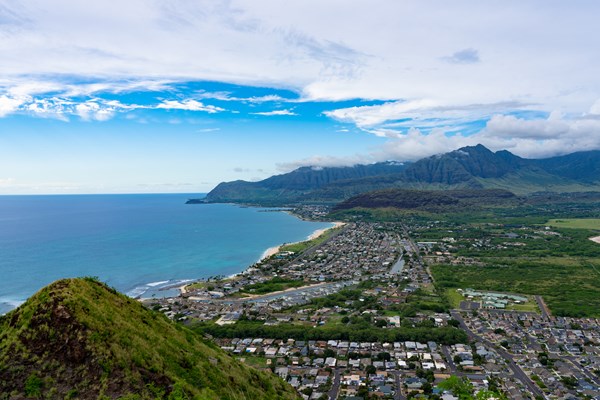Public Safety Power Shutoff program is a call to embrace on-site energy solutions
Aug 28, 2024

Hawaiian Electric recently rolled out its Public Safety Power Shutoff (PSPS) program statewide. As part of this program, the company may shut off power in certain areas it identifies as high risk for wildfires during high winds and dry conditions.
This month, in the Honolulu Star-Advertiser, Michael Colón, director, energy sector, at Ulupono Initiative, discusses how the PSPS program can be the first step towards energy resiliency.
“This type of program, though still relatively new both in Hawaii and nationally, has triggered important conversations about how we can better prepare for and adapt to these emerging challenges,” Colón wrote. “While a PSPS program may be a necessary safety measure today, it should also serve as a bridge to more advanced, resilient grid technologies tomorrow.”
As published in the Honolulu Star-Advertiser:
Hawaiian Electric’s recent introduction of the Public Safety Power Shutoff (PSPS) program represents a proactive approach to mitigating wildfire risks, which is a growing concern as climate change continues to impact local weather patterns. This type of program, though still relatively new both in Hawaii and nationally, has triggered important conversations about how we can better prepare for and adapt to these emerging challenges. While a PSPS program may be a necessary safety measure today, it should also serve as a bridge to more advanced, resilient grid technologies tomorrow.
PSPS programs are designed to protect communities by preemptively cutting power during high-risk weather conditions that could potentially ignite wildfires. Across the United States, utilities in states like California, Oregon, and Nevada have adopted similar measures, recognizing the importance of preventive action in safeguarding lives and property. For instance, in California, utilities like Pacific Gas and Electric (PG&E) have utilized PSPS to minimize the risk of wildfire incidents in high-risk areas, especially following devastating fires in recent years. These initiatives, while effective in reducing immediate fire threats, also shift some of the responsibility for energy resilience to consumers.
In Hawaii, Hawaiian Electric’s PSPS program follows this national trend, aiming to protect the islands from potential wildfire risks. While the program’s primary goal is to enhance safety, it also encourages us to explore new ways to increase energy resilience. By investing in on-site energy efficiency, renewable energy generation, and storage solutions, residents and businesses can not only mitigate the impact of potential power shutoffs but also contribute to a more sustainable and cost-effective energy future.
On-site energy efficiency is a fundamental step in the transition to a more resilient energy system, as highlighted by the State of Hawaii’s Pathways to Decarbonization Report, which emphasizes reducing energy demand before adding new generation and storage. Simple consumer-level upgrades can add up to significant energy savings, and—when extended to businesses, utilities, and governmental agencies—these efforts can substantially reduce overall demand. Coupled with on-site renewable energy generation, such as rooftop solar panels, and battery storage systems that store excess energy for use during outages, these measures simultaneously make maintaining critical services more cost-effective and enhance the integration of renewable energy into the grid. Together, these strategies provide a robust foundation for energy resilience and sustainability in Hawaii.
The utility’s PSPS program, while still in its early stages, must serve as a catalyst for Hawaii to accelerate the adoption of these on-site solutions. By embracing energy efficiency, renewable generation, and storage, Hawaii can enhance its energy resilience, reduce its dependence on imported fossil fuels, and lead the charge toward a clean energy future. Moreover, these investments offer long-term cost savings, making these technologies more accessible and beneficial for all residents.
As we navigate this new landscape, collaboration between state and local governments, utilities, and the private sector will be essential. Together, we can develop incentives, streamline permitting processes, and provide education to help consumers make informed decisions about their energy choices. Importantly, these efforts must ensure that solutions are equitable, supporting low-income and marginalized communities that may face greater challenges in adapting to new technologies.
Hawaiian Electric’s PSPS program represents a forward-thinking approach to a complex problem, one that is being recognized and implemented across the country. By seizing this opportunity, Hawaii can position itself as a leader in clean energy, building a future that is safer, more sustainable, and cost-effective for generations of residents to come.

